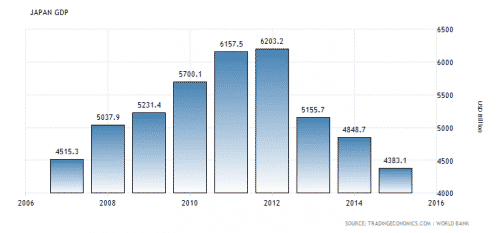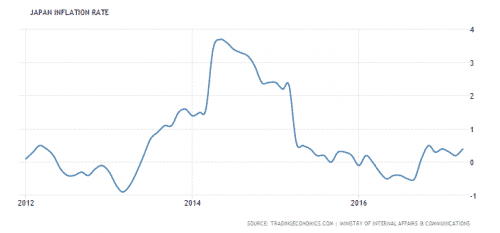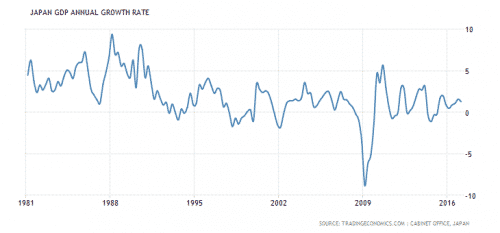Abenomics and Japanese growth
I have been seeing a decent number of commentators saying the pickup in Japanese growth is a confirmation that Abenomics has succeeded. I don’t agree.
Now, Japan grew at a 2.2% annualized pace in the last quarter, marking the fifth straight quarter of growth. And more is expected this quarter. But last quarter’s growth was only the fastest since Q1 2016 and this quarter’s growth is expected to be lower than last quarter’s.
Moreover, a lot of this is export-driven – meaning it’s not clear if domestic demand has picked up sustainably. After all, real wages are still falling. If one looks at Japanese GDP in dollar terms for example, the currency effect that has bolstered the trade balance is clear because it has led to much lower GDP in US dollar terms.
So I am not convinced that Abenomics has worked. I am much more inclined to say it has failed – and that what we are seeing is temporary.
Let’s also remember that Abenomics is supposed to stop entrenched deflation dead in its tracks. But while inflation has picked up somewhat, it is much lower now than it was in 2014. And oil – a huge imported commodity – is going to depress those numbers further.
Bottom line: We’ve been here before – several times in fact.
Nominal GDP growth in Japan is well within the limited range we have seen since the bubble burst in 1989. Only during the Great Recession did it break out of that range – and then, it did so to the downside. We are nowhere near the top of the range now, nor should we expect to be anytime soon.



Comments are closed.